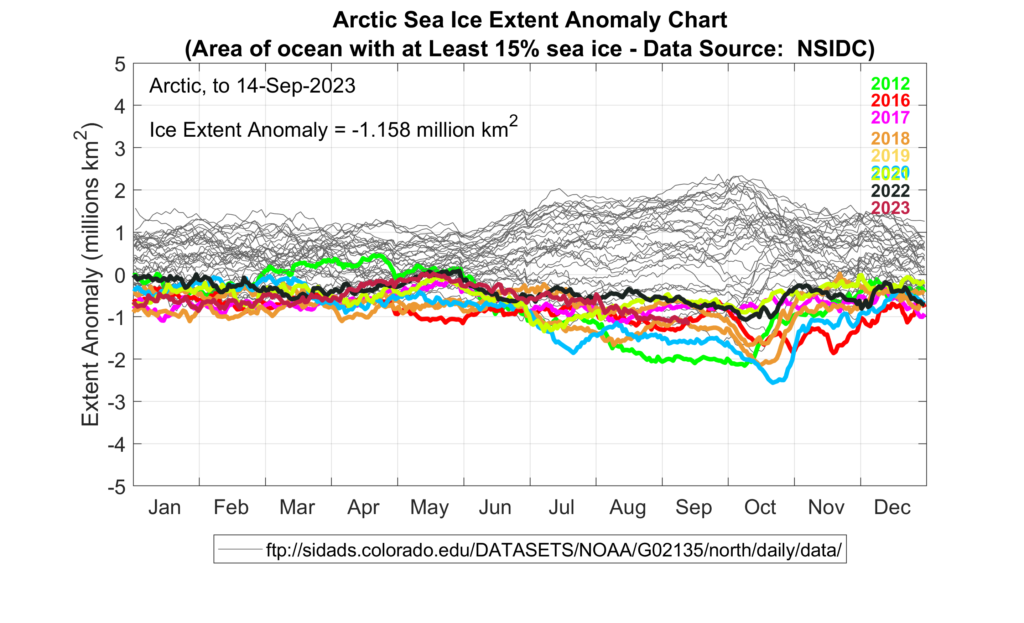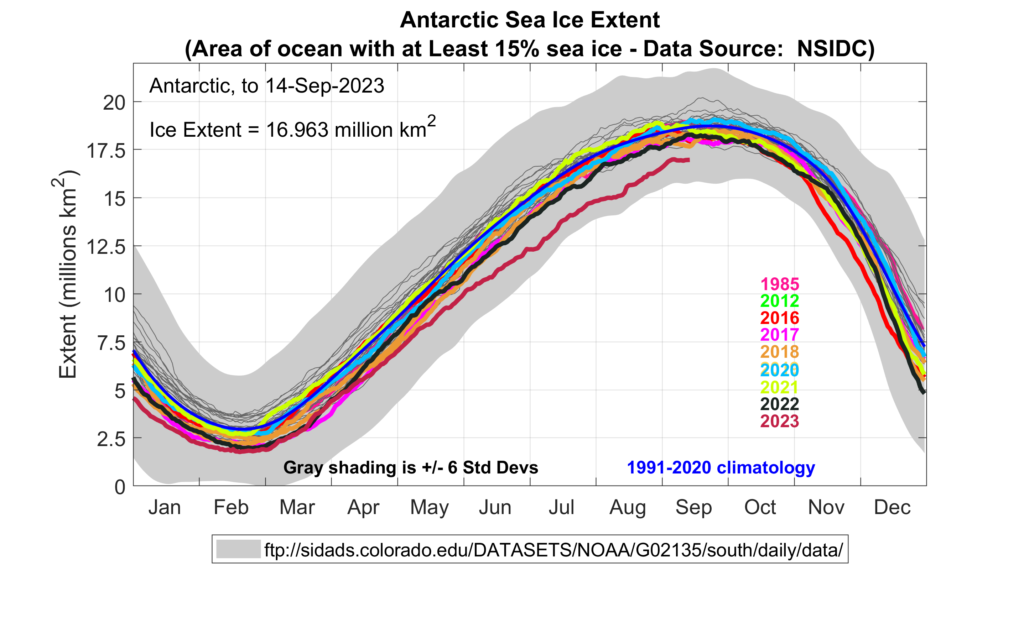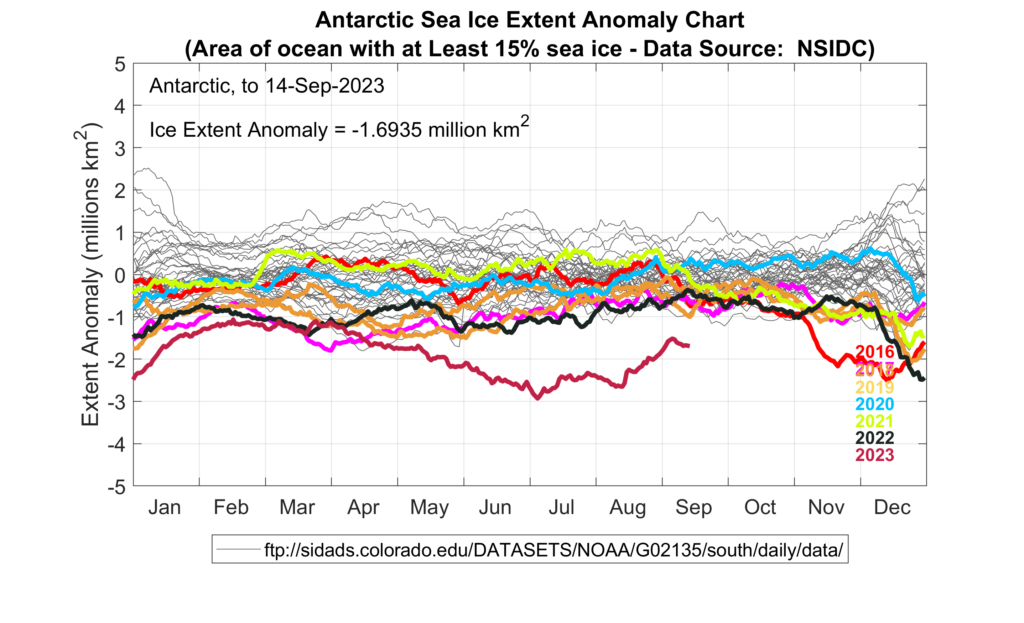September 14 2023: Over the past week, the sea ice had a decrease, since last week, by a higher rate of 4.46%, from the level on 09/07/2023 of 4.458 M km2 to 4.259 M km2 for this week. The sea ice extent is now at about the 3rd lowest level ever at this time year and about tied with 2018, but still higher than the top two low sea ice years of 2020 and 2016. We are now getting near the point of turnaround from sea ice decrease to increase so we’ll see how that goes over the next few weeks; things are slowing down a bit and perhaps we are near that transition point.

Data Source: National Snow & Ice Data Center (NSIDC; https://nsidc.org/).
The negative sea ice anomaly this week was higher than the anomaly of -1.010 M km2 on 09/07/2023 to a greater negative anomaly of -1.158 M km2 on 09/14/2023, and so more anomalously negative for this time of year.

Data Source: National Snow & Ice Data Center (NSIDC; https://nsidc.org/).
In the waters around Antarctica, 2023 stands out as an extremely low sea ice year. The record began in 1979 and the sea ice extent this current austral winter season is outside of 6 standard deviations (SD) for the time series. Note that the grey shading in our Arctic sea ice plots (like the one above) is usually two standard deviations, whereas the below plot for Antarctic waters shows six SD. The current situation around Antarctica is a truly extreme deviation from what could be considered normal for the austral sea ice season.

Data Source: National Snow & Ice Data Center (NSIDC; https://nsidc.org/).

Data Source: National Snow & Ice Data Center (NSIDC; https://nsidc.org/).


